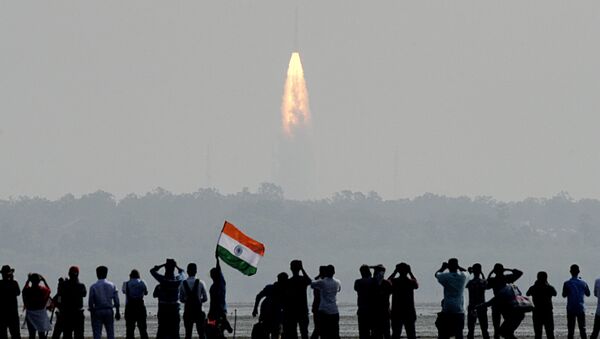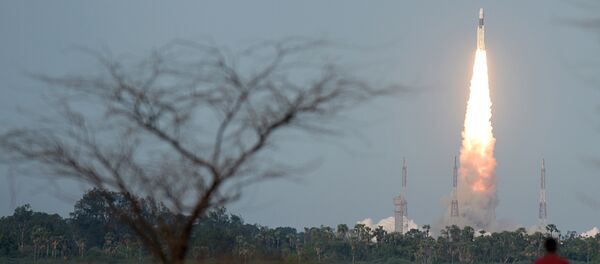In a major boost to network-capable surveillance capacity of the IAF, the Indian Space Research Organisation (ISRO) launched a dedicated communications satellite, the GSAT-7A, on Wednesday. The force has long been looking to develop and launch such a communications device, as it is considered crucial for its Network-Centric Warfare Program. The satellite was indigenously developed at a cost of around $85 million.
READ MORE: India Needs Space Command – Strategic Technologies Head of Leading Think Tank
India’s Geosynchronous Satellite Launch Vehicle (GSLV), in its 13th flight, launched the 2250 kg operational communication satellite from the Second Launch Pad (SLP) of Satish Dhawan Space Centre SHAR, Sriharikota. It will take a few days for the satellite, after separation from the launch vehicle, to reach its orbital slot.
“Data is mostly from reconnaissance satellites and weather satellites. A communications satellite is just a carrier of such data. There are some more aspects like real-time information is received from UAVs radars aircraft etc. The satellite would be useful for all communications related tasks,” Dr. Ajey Lele, a senior fellow at the Institute For Defense Studies and Analyses (IDSA), a New Delhi-based think-tank on security issues, told Sputnik.
The approval for this dedicated satellite was granted in early 2016 by the Indian government as per IAF’s demand. The satellite is similar to the GSAT-7 (Rukmini), which was launched on September 29, 2013, exclusively for the India Navy. Rukmini provides real-time inputs to Indian warships, submarines and maritime aircraft venturing into the Indian Ocean Region (IOR).
READ MORE: India Continues to Use Foreign Launchers for Heavy Satellites
The Indian Regional Navigation Satellite System (IRNSS), which is an indigenous navigation system, is another important part of India’s Network-Centric Warfare Program. The IAF has already been provided with receivers for using its indigenous GPS.
Apart from supporting various military requirements, the IRNSS can be used for target identification and weapon launching systems. India has also been working expeditiously to establish high-powered radar systems and other strategic assets to add strength to armed forces' nascent space command project. Nevertheless, Lele argued that this launch should not be seen as a surge in its launches of military satellites.
“I don't think there would be a surge in launches of military satellites. Possibly India would have separate satellite for the Indian Army in near future, nothing beyond that,” Lele concluded.





